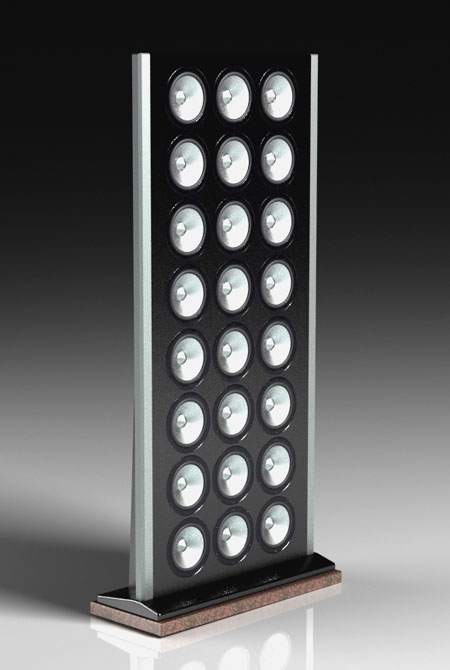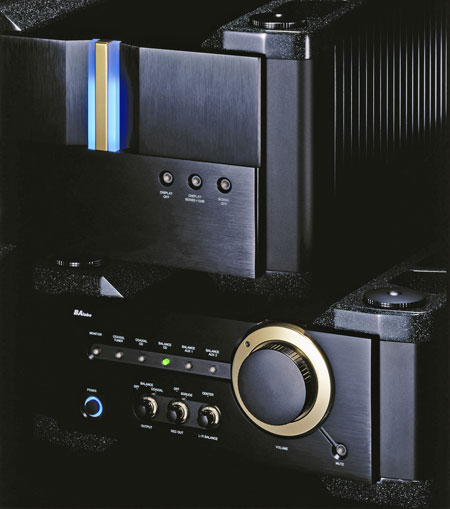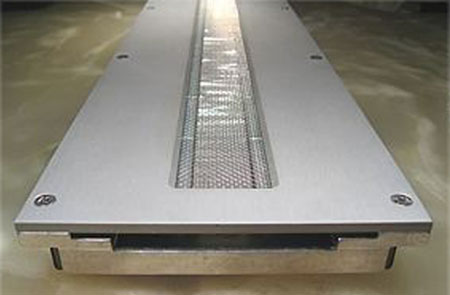Ne Plus Ultra


The Ultimate consists of 12 separate, open-baffle dipole panels, each nearly seven feet tall. (The photo at the top of this blog entry is a "mini" Ultimate system with five panels.) In total, the left and right channels include two super-high-frequency panels (L1 and R1 in the photo above), four high-frequency/midrange panels (L2/L3, R2/R3), two woofer panels (L4, R4), and four subwoofer panels (L5/L6, R5/R6). As you can see, the panels are arranged in a mirror-image configuration, with the less-directional low frequencies in the middle and the more-directional high frequencies on the outside to create a stereo soundfield. Placing the panels next to each other, the entire system stretches almost 37 feet wide and weighs just over four tons—obviously, it needs a really big room with heavily reinforced floors.

The super-HF and HF/midrange panels, shown above with the covers removed, use the company's trademark ribbon drivers—a total of 210 feet of 2-inch ribbons in the HF/midrange panels and 13 feet of 1-inch ribbons in the super-HF panels. All the ribbons exhibit much greater maximum displacement than most, resulting in a distortion measurement below 0.02% at 99dB SPL. The ribbon sections include a total of 1304 superstrong neodymium magnets that are said to increase the impact and "slam" as well as enhance the microdynamics of the system.

Low frequencies are handled by the woofer and subwoofer panels, which use custom cone drivers. Each woofer panel, shown above with cover removed, sports 24 8-inch cones, while the subwoofer panels each include 10 15-inch drivers. Like the ribbon panels, these are open-baffle dipoles and true line sources, which avoid any cabinet-based colorations and limit reflections from the walls, ceiling, and floor thanks to well-controlled horizontal and vertical dispersion.

The Ultimate system comes complete with its own power amps—six BP-1s from Bridge Audio Laboratory to be exact. Each dual-mono amp generates 500 watts per channel for a total of 6 kilowatts, which seems like more than enough until you learn that the system can handle over twice that much power continuously and up to 62kW peak for 10 milliseconds! All six amps are controlled by one BC-1 preamp, which is also included. In total, the electronic components by themselves represent over half a million dollars, which is 25 percent of the total cost for a 2-channel system. (For an extra half-mil, you can get 12 bridged BP-1s with a total of 20kW, but company founder Bo Bengtsson doesn't recommend it unless you live in a castle with very rigid stone walls.)

The Ultimate's specified frequency response is mighty impressive—15Hz to 50kHz (–3dB). And it can play loud—143dB SPL at the maximum rated continuous power and 146dB SPL at peak power thanks to a sensitivity of 100dB/W/m into 8Ω, the system's nominal impedance. Interestingly, the impedance of each ribbon panel is 8Ω over its entire frequency range, deviating by no more than 0.5Ω.

Clearly, the Ultimate is intended for 2-channel listening, but here's a crazy idea for a ne plus ultra home theater—put one Ultimate system behind a 40-foot-wide, acoustically transparent screen and another behind the seats for the surround channels. Perhaps add an extra midrange/HF panel in the middle of the front system for the center channel—the company claims its ribbons can go down to 200Hz (-3dB) with its Ultra Propulsion transformerless interface—or set up the system to produce a phantom center from the front right and left channels. Of course, you'd need a commercial-grade digital-cinema projector to fill a 40-foot screen, but what's another few hundred thousand dollars when you're spending four million on the speakers and amps?
- Log in or register to post comments




































































